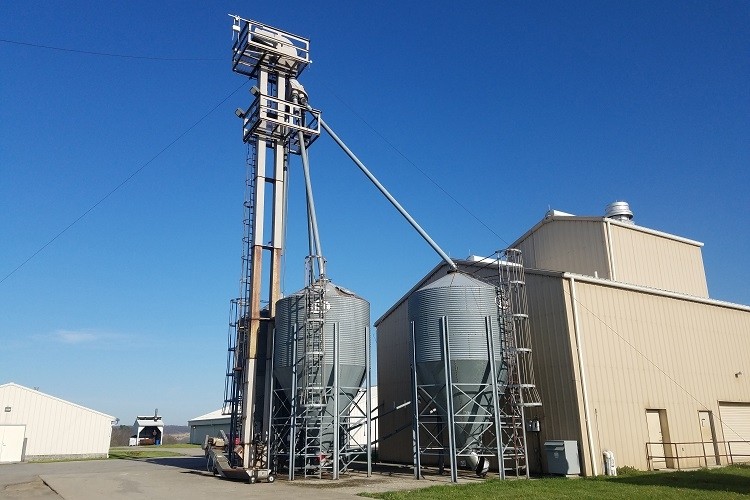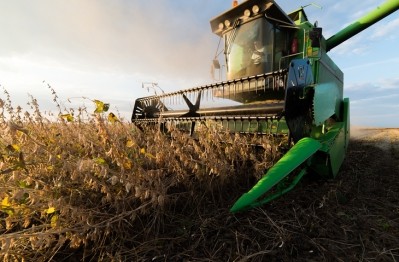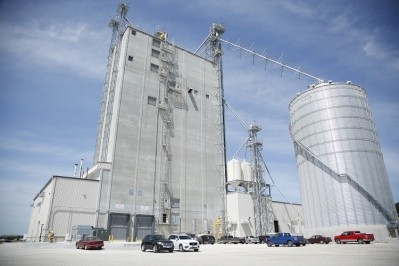US: Safety and pellet design at the heart of new research feed mill

The progress of upgrading the mill started in 2012 and is expected to cost close to $1m including donated machinery, gifts and building work, said Joe Moritz, professor and extension specialist in feed manufacture and poultry science. The upgraded facility was dedicated on Friday, May 4.
“It was a huge process because we’re developing a research feed mill,” he told FeedNavigator. “The thing about the research mill is it’s about replicated variation.”
Feed batches produced at the facility can be used to feed the birds involved in feed research trials at the university, he said. Poultry production is of interest because the state generates about two million broilers a week.
“The biggest question that I’m interested in is a balance in feed manufacture,” he said. “[It’s a] three-legged stool – pellet quality, nutrient availability and pathogen control – how do you balance all the variables?”
The current facility takes the place of what had been a shell of a feed manufacturing facility with a few pieces of equipment, said Moritz. “We were looking to enhance our program,” he added.
Pellet production and nutritional research
The new facility is designed to produce about one ton of feed an hour, said Moritz.
“We typically push it to 1.3 tons [an hour] – no one has something that small in the poultry industry,” he said. “If I had a 10,000 ton per hour facility or something more similar we couldn’t replicate the experimental units or batches for feed.”
The mill works with the experimental production of about 25,000 broiler chickens, he said. “It’s the same concept – it has to be scaled down so we can replicate,” he added.
Initial and ongoing work at the feed mill includes looking at all the variables involved in the feed production system including aspects like steam input, feed retention and temperatures used to generate a quality pellet, he said.
“When you use extreme temperatures and time, you can do a good job of knocking down pathogens and [making] pellets but not at nutrient availability,” said Moritz. “Hopefully, we’ll figure out the right combination to do all three well.”
Pathogen control within feed ingredients has been an area of interest as elements of the Food Safety Modernization Act start taking effect, he said. “This potentially could be something that is required in the future,” he added.
Additionally, as more producers work to reduce or eliminate the use of antibiotics in their bird production, it becomes increasingly important to take steps focused on making sure that feed is safe, he said.
“Salmonella is the one [pathogen] that is most important and some of the by-product meals have a high probability of carrying salmonella,” he said. “It’s a tricky one to deal with because poultry is a symptomless carrier – but then it is transferred.”
The facility also is set to examine the use of different ingredients like multiple kinds of phosphates, use of dried distillers grains (DDGS), feed enzymes, fungal-based enzymes, transgenic grains and alternative soybean products, said Moritz. “Is it possible to run an under-processed soybean and still knock out the trypsin inhibitor complex?” he added.
High-tech equipment
One of the major changes for the new feed mill is the amount of automation, said Moritz. And, it brings a newer PLC – programmable logic control.
“The PLC is amazing,” he said. The program allows for data to be gathered and assessed regarding a range of variables involved in pellet production, he added.
The new facility also has several serge feed bins with probes and the ability to measures the temperatures of the air and the feed, he said. It also includes a variable flow feeder.
Feed produced can be conditioned for 15 seconds to 2 minutes, he said. The machine also has a second, jacketed heating system or “ripener” – “which can retrain feed for up to 6 minutes to reduce the prevalence for pathogens,” he added.
“It looks like a conditioner and the feed moves slowly through it, but there’s no direct steam injection,” said Moritz. “You use direct steam in the conditioner [but, because] it’s a jacketed heat it may not degrade enzymes, but it is going to take a lot of time to understand how exactly it interacts with all the variables.”
Several pieces of equipment were donated for the new facility, he added.
“It’s going to be a huge benefit,” Moritz said of what the new mill would provide to students. “This is the future and they’ll have real experience using state of the art equipment and programming.”















